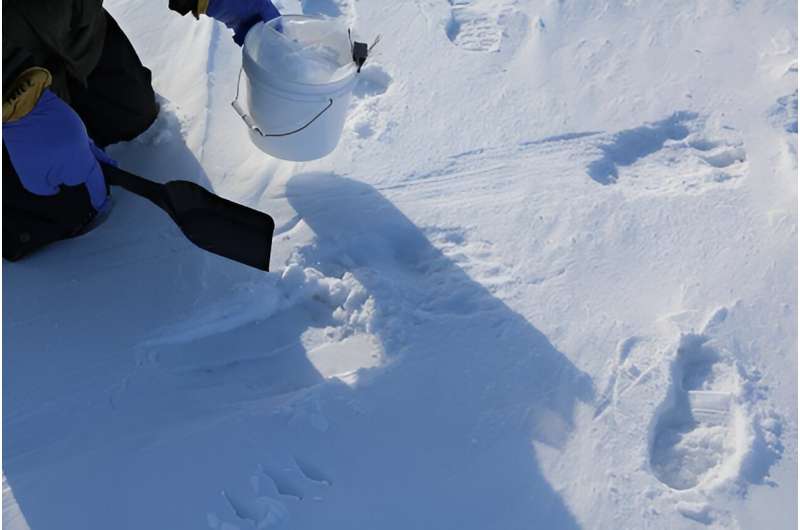This article has been reviewed according to Science X's editorial process and policies. Editors have highlighted the following attributes while ensuring the content's credibility:
fact-checked
trusted source
proofread
Research team identifies polar bears using DNA found in paw prints

Researchers at the University of Idaho have found a unique, non-invasive way to identify polar bears in the Arctic by scraping DNA from a bear's paw print.
In the face of diminishing Arctic sea ice—where polar bears spend most of their time—scientists have been looking for ways to monitor the bears without buzzing them with helicopters, darting and handling them to gather data including DNA.
In a recent article, "Determination of polar bear (Ursus maritimus) individual genotype and sex based on DNA extracted from paw-prints in snow" published in Frontiers in Conservation Science, U of I researcher Jennifer Adams and Professor Lisette Waits and three co-authors from North Slope Borough Department of Wildlife and Alaska Department of Fish and Game show how scientists can identify individual polar bears by the stuff left in their tracks.
The "stuff" is polar bear DNA from epidermal cells bears leave behind in their tracks.
In Alaska, the researchers used trowels to scrape a thin layer of snow from fresh bear footprints. Then, in her Moscow, Idaho, genetics lab, Adams and her colleagues collected cells from the melted snow that made up the sampled polar bear tracks. The cells provide a DNA fingerprint of individual bears.
Of 15 samples collected, two were negative control samples, two contained no bear DNA, and 11 were positive for bear DNA. The technique is still at an experimental stage but, so far, has proven a non-invasive and cost-effective way to learn about bears in the wild.
Because polar bears occupy remote and environmentally extreme habitats, population monitoring for conservation and management is challenging, costly and becoming more difficult with rapidly changing environmental conditions.
"To our knowledge, this is the first time that polar bears, or any other species, have been individually identified and sexed using environmental DNA collected from snow," Adams said.
More information: Andrew L. Von Duyke et al, Determination of polar bear (Ursus maritimus) individual genotype and sex based on DNA extracted from paw-prints in snow, Frontiers in Conservation Science (2023). DOI: 10.3389/fcosc.2023.1166279
Provided by University of Idaho



















